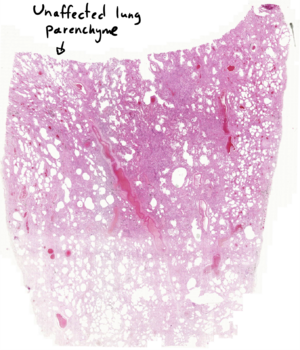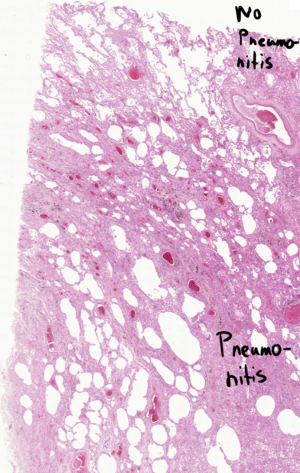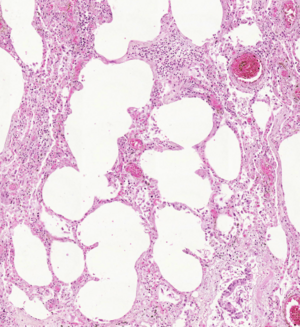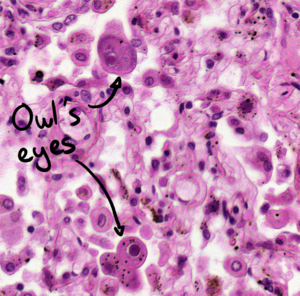46. CMV lung
Staining: HE
Organ: Lung
Description:
Only a small region in the upper left corner shows healthy lung parenchyme. The rest of the slide shows inflammation of the lung interstitium, the alveolar septa. The interstitium is so thickened that the majority of the slide is interstitium, not alveolar spaces.
The alveolar spaces are empty.
A special cell morphology called “Owl’s eye” can be seen. These cells are enlarged and have inclusion bodies inside the nucleus.
Diagnosis: Cytomegalovirus pneumonitis
Causes:
- Immunosuppression
Theory:
Cytomegalovirus doesn’t cause pneumonia, it causes pneumonitis, because it’s the interstitium that’s inflamed and not the alveolar space.
Cells infected by the virus become very large, and accumulate inclusion bodies, which are aggregates of protein that are visible macroscopically.





